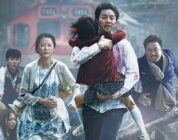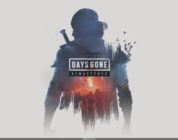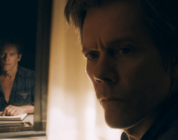Life-long horror movie fan Adam Hart recalls his introduction to the films of George A. Romero. It was decades ago. He was about 14, and his mother had bought him a VHS copy of the zombie classic “Dawn of the Dead.”
Hart recalls being “traumatized” by the film and its copious gore.
“It marked me,” he said.
Whether enticed or simply undeterred, Hart went on to a career as a film scholar, curator and archivist. He’s now based mostly in Pittsburgh, and his second book, “Raising the Dead: The Work of George A. Romero” (Oxford University Press), seeks to put a new spin on another Pittsburgh-identified fellow who Hart said even most horror fans have unfairly pigeonholed.
Simply put, there was a lot more to Romero than zombies.
Though steeped in Romero’s oeuvre, Hart was not aware how much more until he and then-University of Pittsburgh colleague Ben Rubin were tasked with cataloguing Romero’s archive, which was donated to Pitt’s Horror Studies Collection in 2019.
The trove included everything from papers from Romero’s days as an art student at Carnegie Tech to his correspondence with producers and a vast array of unfilmed scripts dating from the 1960s into the 2010s. The materials were illuminating in themselves, and showed even Romero’s best-known work in a different light.
As Hart puts it, “Who thought there was anything new to say about ‘Night of the Living Dead’?”
From Bergman to zombies
Hart, 42, has taught at Harvard, North Carolina State University and Pitt. The West Coast native works as curator and archivist for Chicago-based Media Burn, which specializes in indie documentaries.
One surprise in the archives was Romero’s artistic inspirations. The Bronx native enrolled in Carnegie Tech in 1957, as the new wave of arthouse films from overseas was cresting in the U.S. Romero, Hart said, was profoundly influenced by Swedish master Ingmar Bergman, as was evident in the script for “Whine of the Faun,” a harrowing, medieval-set allegory that Romero and some of his pals wanted to shoot as what they called “Pittsburgh’s first full length feature film production.” (Romero was also a big fan of Orson Welles and of Michael Powell’s 1951 fantasy musical “Tales of Hoffman.”)
University of Pittsburgh Library System, Archives & Special Collections
They never shot it, but Romero’s brief college experience supplied another key experience: a role as a junkie in a local production of Jack Gelber’s avant-garde 1959 play “The Connection.” Hart observes that the play’s basic structure of a handful of characters in a confined space, relating to each other under duress, would appear again and again in Romero’s own scripts. The stage production also how the putative art student discovered he’d rather extract emotional responses from audiences than practice drawing.
The basic trajectory of Romero’s career, especially in Pittsburgh, is by now near legendary. In the ’60s, he and a small band of colleagues including Russ Streiner shot TV commercials here until they raised the funds to shoot “Night of the Living Dead.” The low-budget, black-and-white 1968 thriller depicting an unexplained zombie apocalypse became a huge cult hit, though its makers never saw a penny from it because of a copyright snafu.
Romero’s other best-known film, the similarly influential 1978 sequel-of-sorts “Dawn of the Dead,” is among the quintessential Pittsburgh-shot films, with its trio of protagonists holding off a zombie invasion of the Monroeville Mall and battling a motorcycle gang. Romero also made the hit horror anthology “Creepshow” and several more, if less influential, zombie films — though aficionados will recall his vampire movie “Martin” and “Knightriders,” a unique drama about contemporary motorcycle jousters.
But in the archive, Hart learned those highlights offer only a glimpse into Romero’s fertile mind.
Trapped by zombies
“He was astonishingly prolific,” said Hart. “He was writing all the time. He was always developing new ideas, writing new scripts and treatments and proposing new stories to make. And his interests were all over the place. He wrote westerns and comedies and action films and a lot of sci-fi.”
Romero, in other words, spent much of his career trying not to make more zombie films.
“After ‘Night of the Living Dead,’ he was tethered to zombies for the rest of his life,” Hart said. “But he had to make a lot of zombie movies if he wanted to keep working. And there were times when he really resented that. You know, there was one review where he likened it to being in a prison, but one where he liked the food because he likes horror movies.”
“But what made Romero such a great horror film maker, not just a great filmmaker or a great artist. was that tension with the genre,” Hart said. “What you would find is that with each horror movie that he made, each zombie movie that he made, he would basically reshape the genre to fit what was most interesting to him. If he had to make horror, then he could make horror into something that could accommodate, satire or silly slapstick or, you know, exciting action sequences or the kinds of social commentary that he was really interested in making.”
Romero repeatedly returned in his scripts to depictions of societal collapse. Many have noted messages about racism encoded in “Night of the Living Dead,” with its tragic Black protagonist. More plain still is the critique of consumerism inherent in the mall-obsessed zombies of “Dawn,” delivered so blatantly that Hart consider the film more comedy than horror. (The film’s human characters are similarly satirized.)
Critiques of capitalism are similarly evident, Hart said, in Romero’s never-produced “War of the Worlds” adaptation, which he wrote in the ’80s. Though inspired by the H.G. Wells story, Romero’s version is built around his own motifs.
“The script, really captures a wonderful dynamic between the characters,” said Hart. “It’s a really great mix. That’s always what Romero was more interested in than story, is just kind of bouncing characters off of each other.”
Romero’s distrust of corporate capitalism likewise informs his late-1990s feature-length adaptation of the video game “Resident Evil.” It also went un-produced — largely because the script’s gore would have merited a commercially unfeasible X rating. But Hart credits the publicity around the unrealized project with kicking off the zombie craze in films and TV: The long-running “Resident Evil” film series began in 2002; the spoof “Shaun of the Dead” followed in 2004, and the series “The Walking Dead” premiered in 2010.
In fact, Hart notes, Romero spent much of the ’80s and ’90s just writing scripts and developing projects. While the money was good, most of them never came to fruition.
“Looking to eat more meat”
Romero — who lived in Pittsburgh until the mid-‘90s, when he moved to Toronto — died in 2017. Yet his legacy remains with us today.
Hart argues that, starting with “Night of the Living Dead,” Romero helped elevate the “lowly, disreputable genre” into something more culturally weighty. In part, he said, that was by popularizing the notion of “anti-spiritual horror” — horror with no supernatural element.
“The idea of the zombie is that it’s just a body that’s come back. It’s flesh. It’s meat, looking to eat more meat,” said Hart. “It’s just a dead body kind of confronting us and wants to also make us a dead body.” In the era of the Vietnam war and bloody civil rights struggle, Hart argues, “transcendent, religious, divine, spiritual aspects of something like ghosts or vampires or even werewolves — like what’s scary is not these kind of lofty ideas, but what’s there in front of you.”
Romero also popularizes the notion that the monsters in monster films — yes, even zombies — are not the villains.
“The zombie can’t help that they’re hungry for flesh, that they have risen from the grave and are stumbling around with one desire only. But the people can,” Hart said. “What’s really frustrating to him is the idea that people can’t put aside their differences to literally prevent the apocalypse, to save their own lives. Instead, they’re going to fight among each other about petty little differences and bigotries and whatever else.
“There’s nothing interesting to Romero about the conflict between, you know, a scary creature and a person that it’s stalking. What’s interesting is how you respond to that. And he’s always trying to figure out ways in which society might eventually figure out a way to work together to solve the existential threat, but he can never quite get there.”




